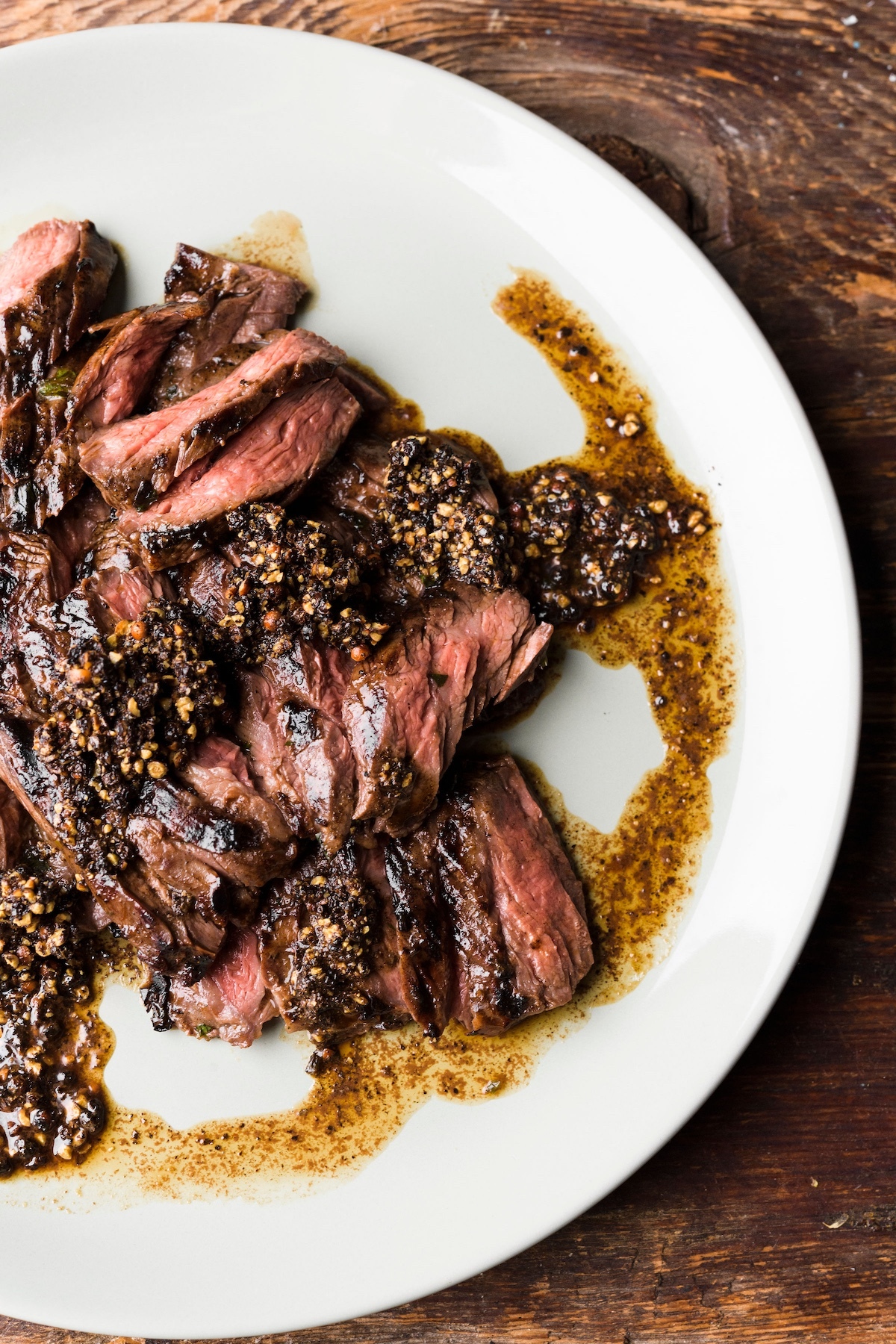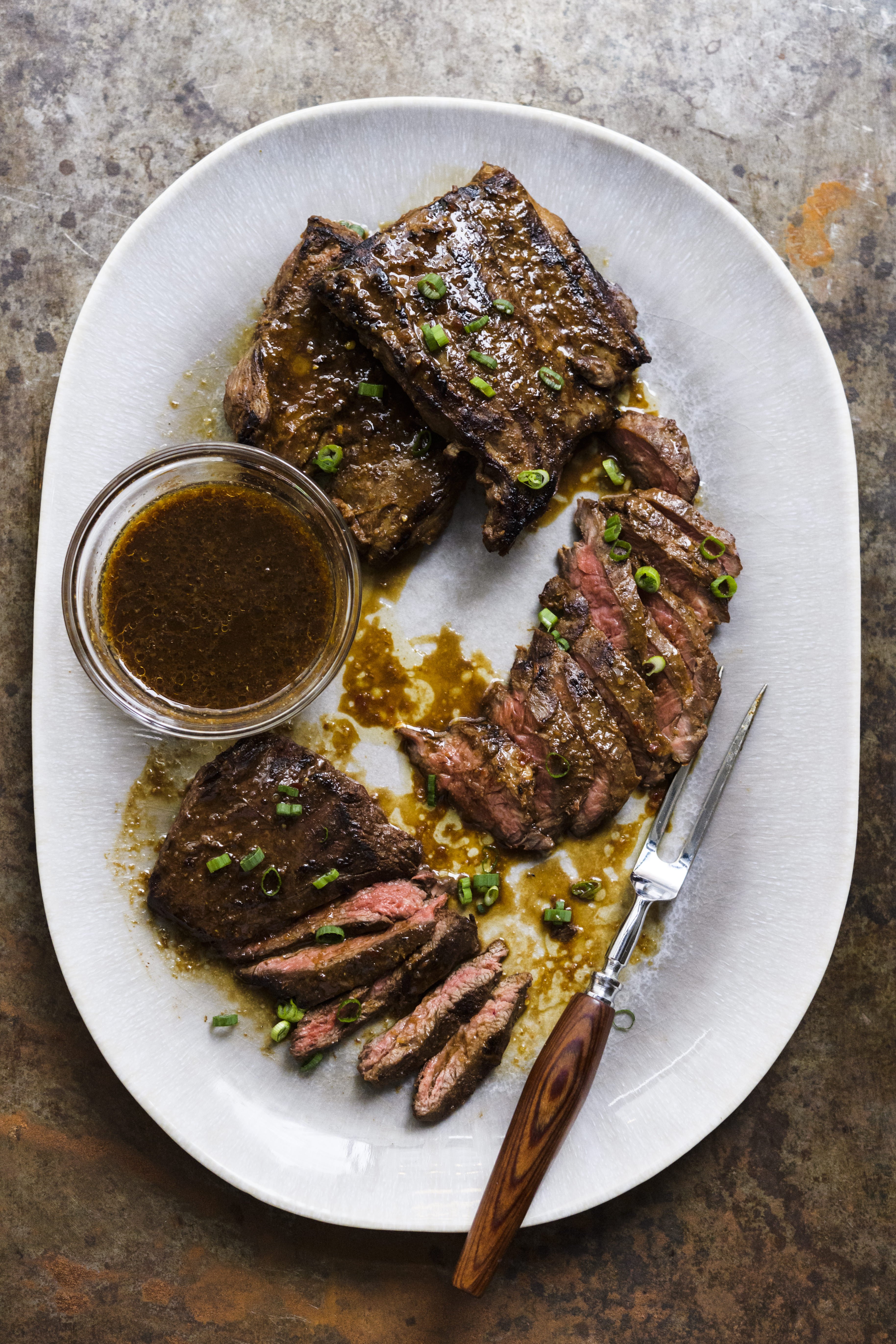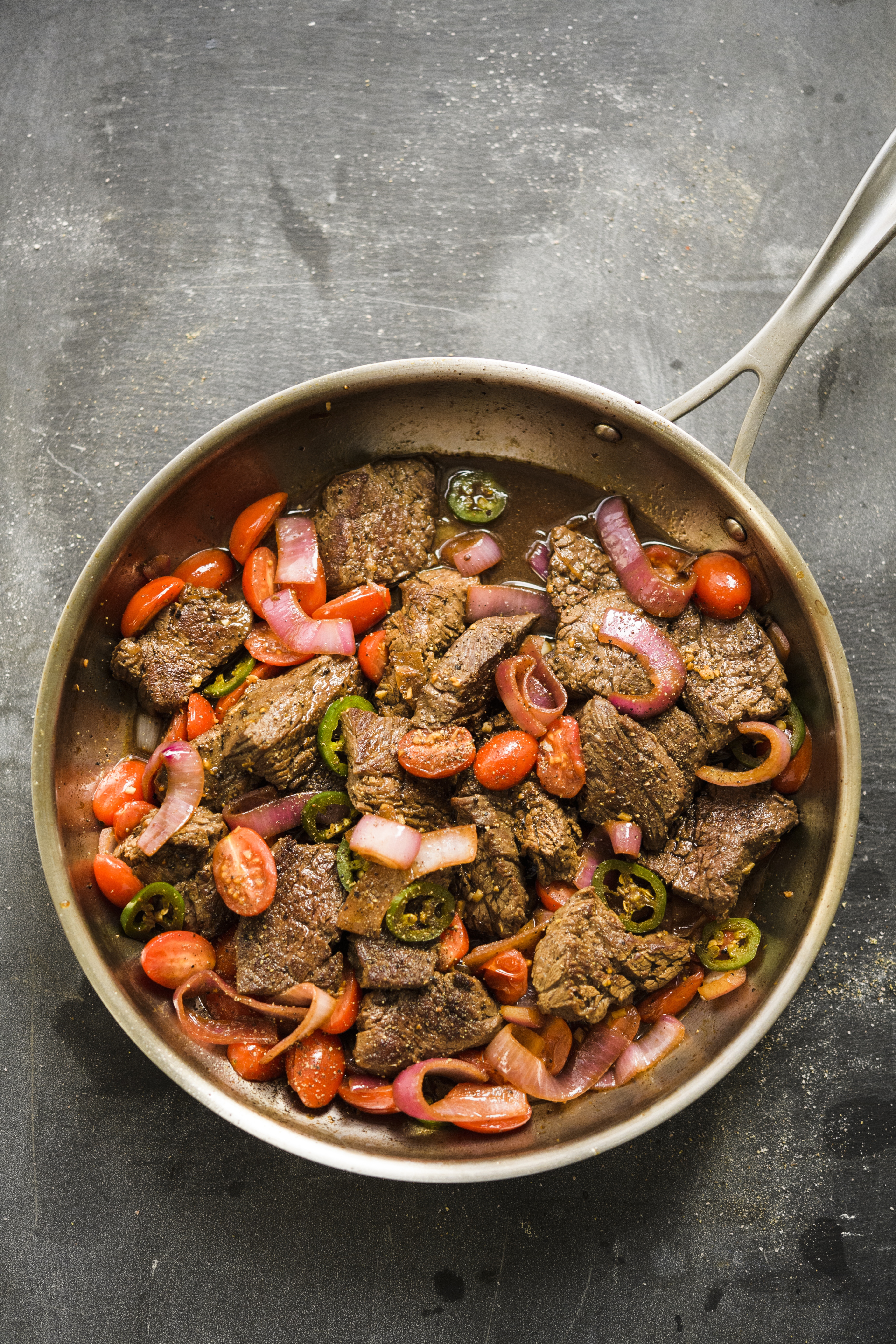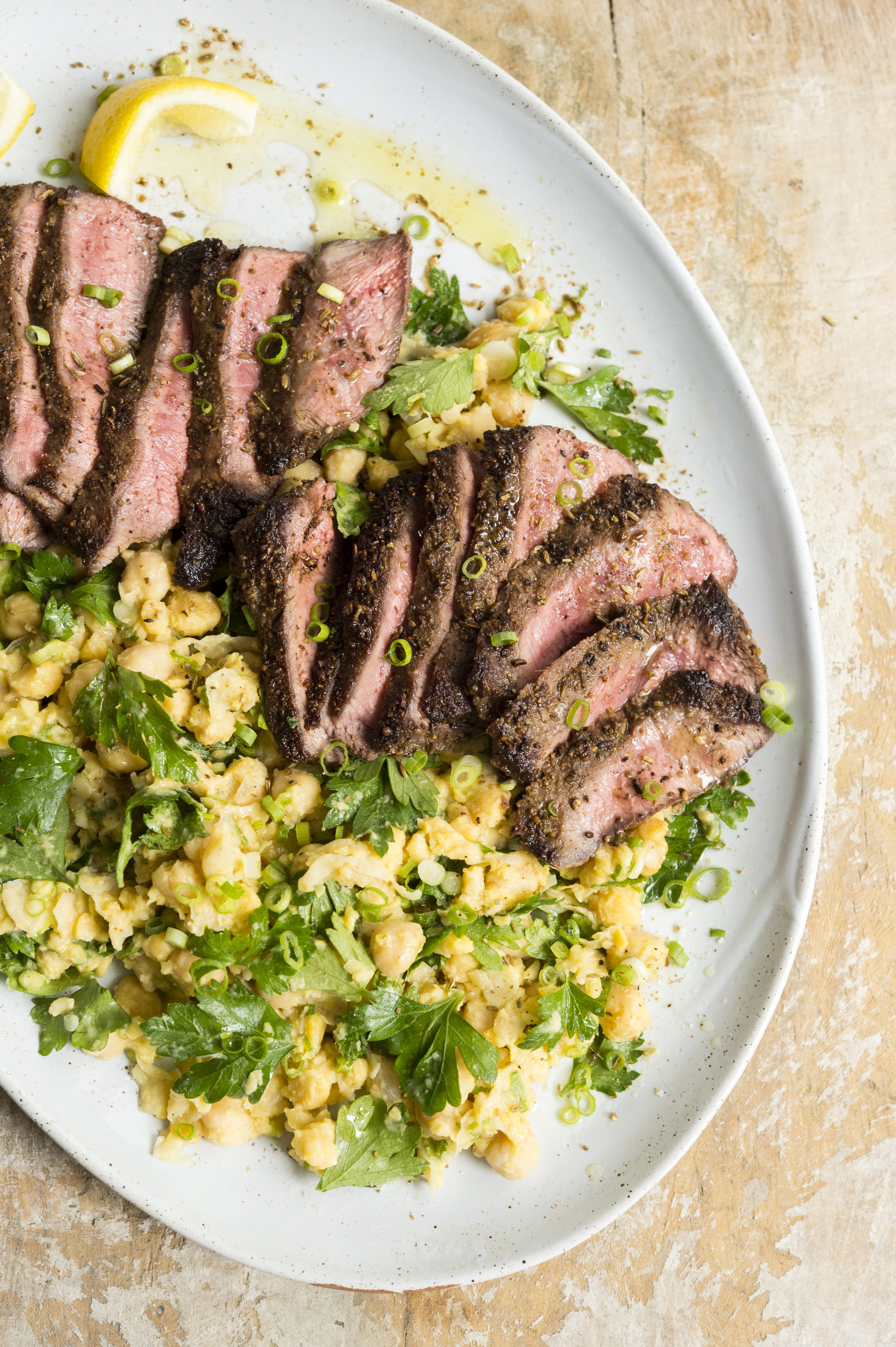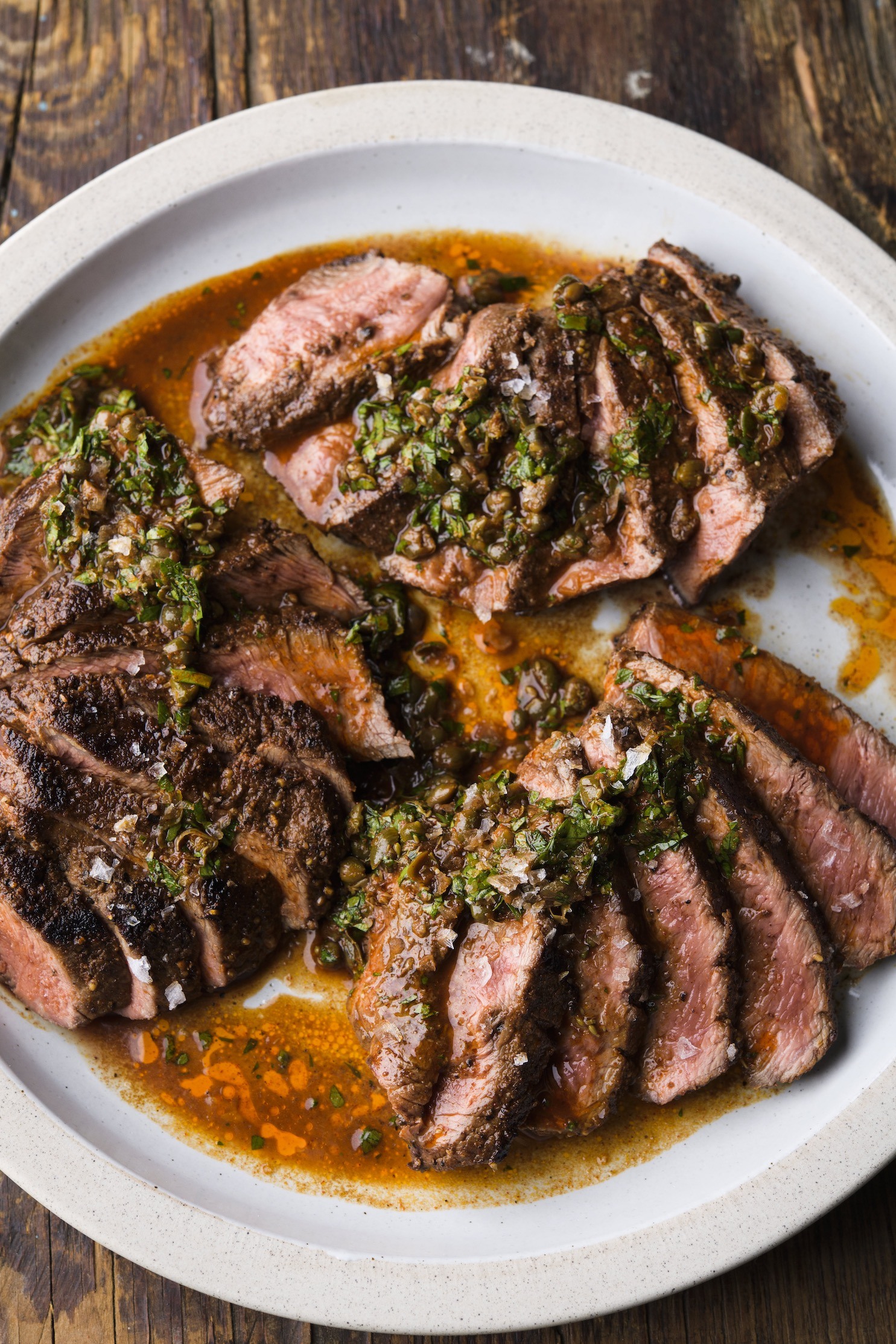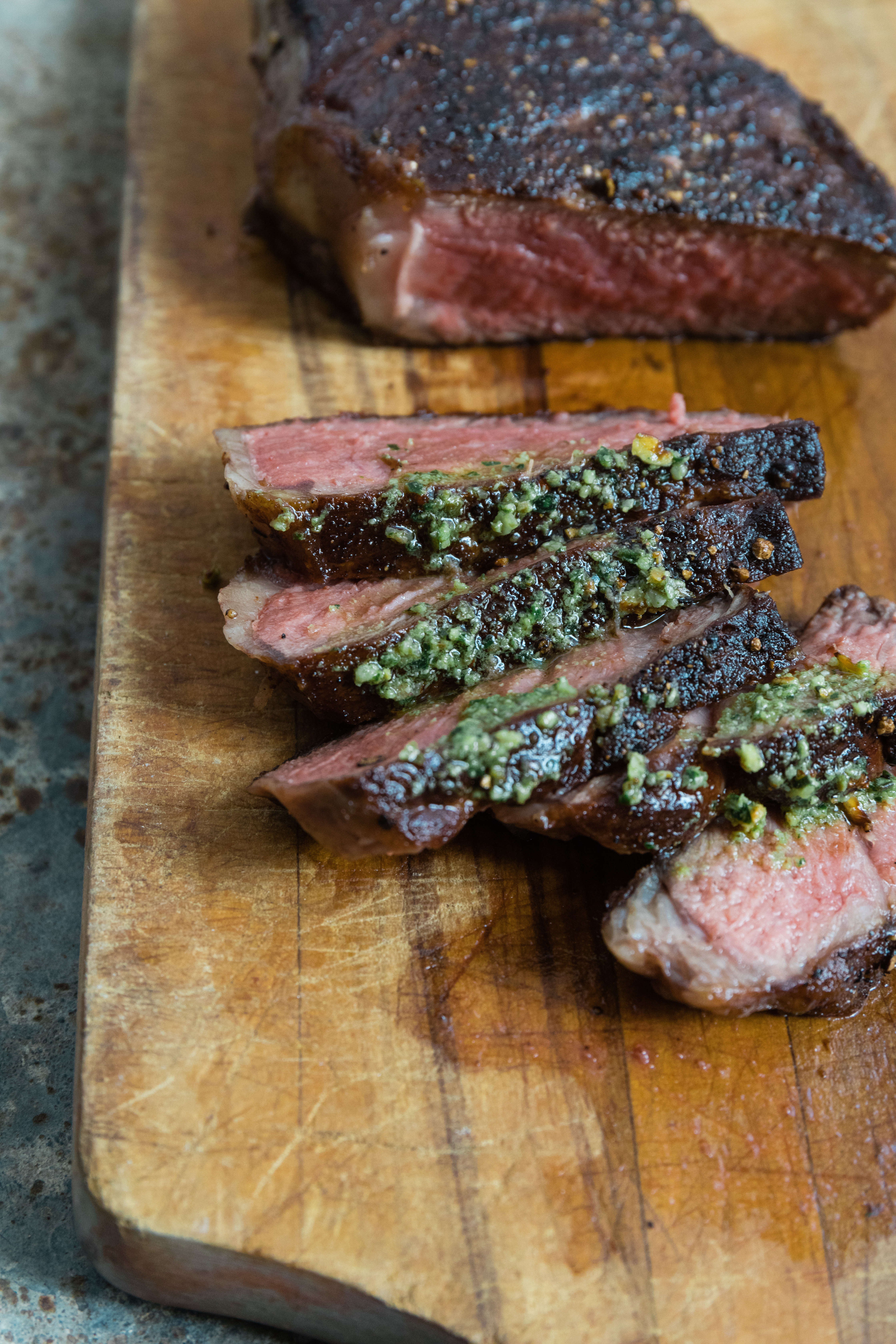“I learned to grill from my dad, my dad learned to grill from his dad and his dad learned to grill from his dad,” says Meathead Goldwyn, the barbecue expert behind AmazingRibs.com. “That’s the way most people learn to grill, but when you sit down and think about it, you figure out that a lot of that stuff is just wrong.”
On a recent episode of Milk Street Radio, Goldwyn told Christopher Kimball why he now views a backyard barbecue like a science experiment, where controlling variables like heat and time lead to steak perfection. When we understand the physical and chemical changes that happen when meat cooks, he says, we can optimize the results, ending up with a juicy, tender ribeye to rival any steakhouse. Before you next head out to the grill, we suggest you read these key takeaways from Goldwyn’s scientific method for grilling, then listen to the full interview here on our website or via Apple Podcasts.
Choose the right cut.
Most steak lovers will tell you the ribeye is their favorite steak and there's good reason. It's the perfect blend of fat and protein. The ribeye actually has two muscles. There's this round muscle that occupies most of the ribeye, and that's the longissimus dorsi. It runs from the shoulder all the way to the hip. But there's this little curved muscle that wraps around the outside of it, and there's this thick layer of fat in between between them. And that little curved muscle is the spinalis dorsi, or the rib cap. That is the best muscle on the animal. The other steak I absolutely adore is the flank steak, which comes from underneath the animal. It's a much tougher steak, but it's got so much flavor.
Embrace the magic of salt.
Salt is the magic rock. When it’s on the surface of meat, it melts and goes to the center. Nothing else can penetrate meat. Garlic, sugar–the molecules are too large, they can only go into the tiny cracks and crevices on the surface. But salt can actually go deeper. Salt alters the structure of the protein and it helps it hold on to moisture. Salt is the most important thing on your spice rack.
Learn how thickness relates to time and heat.
People always ask me whether to cook a steak hot and fast or low and slow. It all depends on how thick it is. Whenever you cook anything, you're doing a physics experiment and a chemistry experiment. This is physics. It takes time for heat to move from the outside of the steak to the inside of the steak. Whether it's in a grill or an oven or a frying pan, the heat is on the outside of the steak, but it doesn't penetrate the steak. It's the heat that is stored in the outside of the steak that heats the inside of the steak. The outside of the steak is like a capacitor or a battery. It stores up the energy and moves to the center. So, it takes longer for a thick steak to cook than a thin steak. But if it takes longer, then you need to dial down the temperature of a thick steak or else you'll burn the outside before you reach the ideal temperature for the inside.
Cook with two heat zones.
When you're learning to grill, learn to manage two temperatures: a hot zone, where you have radiant heat to sear the meat on, and another less hot zone to cook by convection airflow. Start your thick steak on the indirect zone. It's going to slowly warm from edge to edge at about the same rate. You're essentially cooking the inside of the meat and bringing it up to just a little below your target temperature. If you want a perfect medium rare steak–130 to 135 degrees–bring it up to about 125. Once it hits that, lift the lid and move it over to the direct heat zone. Now you're cooking with infrared radiation directly above the energy source. Then, you're going to flip it. You're going to be a human rotisserie because you don't want to build up energy. You just want to cook the exterior of the steak because you've already cooked the interior. You're going for dark brown mahogany.
Don’t be afraid to take the temperature.
When you take the temperature, look for the geographic center. It may take more than one stick and you may have to do a little averaging in your head. It's not going to bleed to death. This is not a balloon. When you stick it with a thermometer, it doesn't deflate. So don't worry about sticking it. Stick it!
Quotes have been edited for clarity.
Join the conversation on Facebook, Twitter, Instagram and Pinterest.
Stay up to date on free recipes, new radio episodes, classes, events and more with our newsletter. Sign up here.

